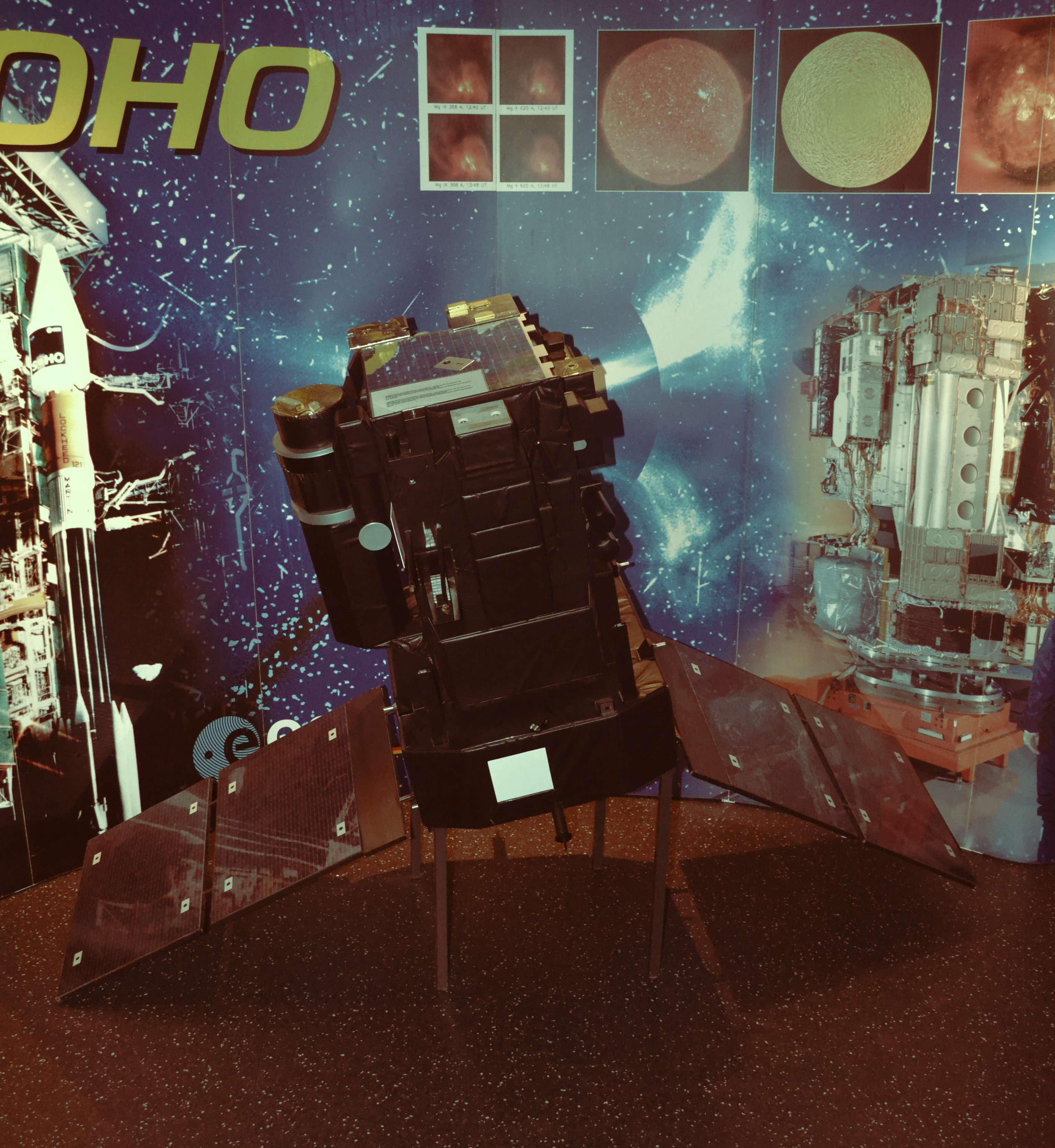|
Solar And Heliospheric Observatory
The Solar and Heliospheric Observatory (SOHO) is a European Space Agency (ESA) spacecraft built by a European industrial consortium led by Matra Marconi Space (now Airbus Defence and Space) that was launched on a Lockheed Martin Atlas IIAS launch vehicle on 2 December 1995, to study the Sun. It has also discovered more than 5,000 comets. It began normal operations in May 1996. It is a joint project between the European Space Agency (ESA) and NASA. SOHO was part of the International Solar Terrestrial Physics Program (ISTP). Originally planned as a two-year mission, SOHO continues to operate after 29 years in space; the mission has been extended until the end of 2025, subject to review and confirmation by ESA's Science Programme Committee. In addition to its scientific mission, it is a main source of near-real-time solar data for space weather prediction. Along with Aditya-L1, Wind, Advanced Composition Explorer (ACE), and Deep Space Climate Observatory (DSCOVR), SOHO is one ... [...More Info...] [...Related Items...] OR: [Wikipedia] [Google] [Baidu] |
Solar Observation
Solar observation is the scientific endeavor of studying the Sun and its behavior and relation to the Earth and the remainder of the Solar System. Deliberate solar observation began thousands of years ago. That initial era of direct observation gave way to telescopes in the 1600s followed by satellites in the twentieth century. Prehistory Stratigraphy, Stratigraphic data suggest that solar cycles have occurred for hundreds of millions of years, if not longer; measuring varves in precambrian sedimentary rock has revealed repeating peaks in layer thickness corresponding to the cycle. It is possible that the early atmosphere on Earth was more sensitive to solar irradiation than today, so that greater glacial melting (and thicker sediment deposits) could have occurred during years with greater sunspot activity. This would presume annual layering; however, alternative explanations (diurnal) have also been proposed. Analysis of tree rings revealed a detailed picture of past solar cycle ... [...More Info...] [...Related Items...] OR: [Wikipedia] [Google] [Baidu] |

